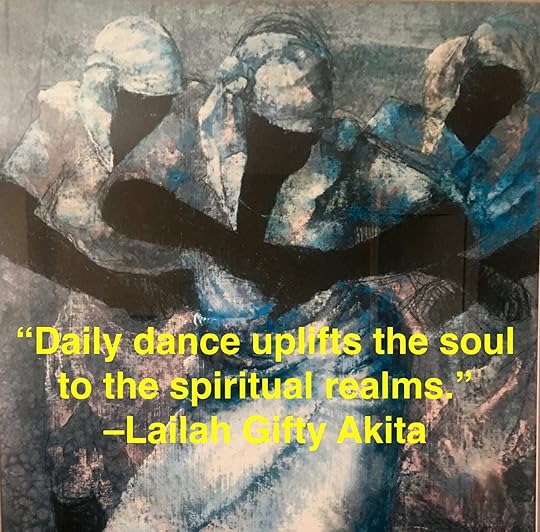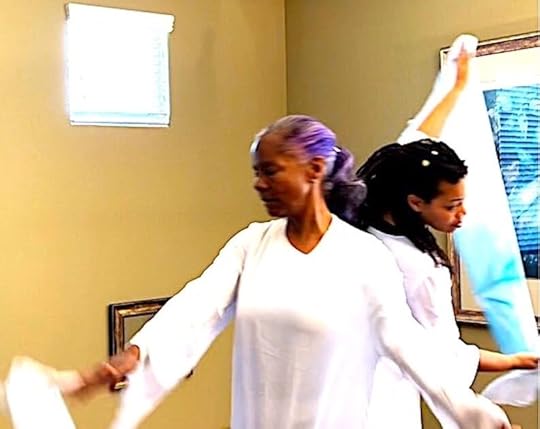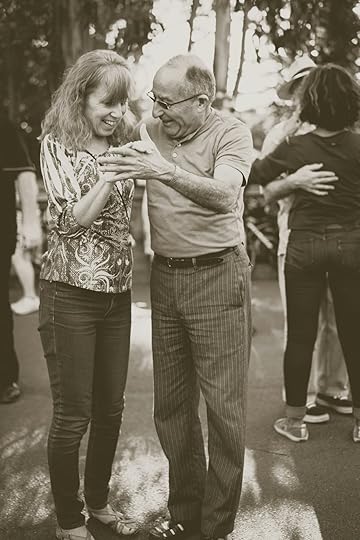The Zen Dancer

The other day I’m driving along and somebody pulled out in front of me so I had to slow down. “Why couldn’t you wait for me to pass?” I thought. For a few weeks now, a water pipe has been spewing water into the street near my home and the city is none too fast to get after it. The mail people don’t deliver the mail on a regular schedule. It’s too cold in here, why don’t they make the room a little warmer? Okay, now that’s an insult to my intelligence! That thing I bought is a piece of junk, a rip off, and no, I can’t get my money back.
So many situations can make me angry. How people act, what they do or don’t do, what I don’t get, how I was treated. What’s not fair. This is mine, it’s not my fault. Perceived or imagined discrimination. Double standards.
My culture has taught me and many of us to be justified in anger too.
Where does anger come from? Fear maybe. Attacks on identity? Putting my importance above all? Ignorance? And more to the question, what does indulging in anger do for us?
First of all, indulging in anger keeps me from self reflection, and seeing the world as it is, or holding on to fixed views. Encouraging bitterness and self-righteous indignation.
Secondly, repeated indulgence in anger causes chronic stress, and as I already noted in a previous post and podcasts chronic stress is a contributor to cancer and other health related issues. Some have argued that justified anger arises from the need for recognition, and its “... complex interplay between anger, [and] self-esteem….” .Sometimes indulgence makes us feel good. Get self-righteous.
Third, and to that second point, anger is addictive and like other addictions, releases dopamine, and it makes you feel good. And we have been told that “Anger is a public epidemic in America.”
So, Let’s talk about Two Sides of an Unexamined Relationship with Anger
Some of us have a committed, long term, sometimes a generational relationship with anger. It’s the way our families and cultures have existed, for eons, centuries, decades. A lot of times we have only been able to get what we wanted, or be made whole through using anger. We “act a fool” so that we can get what was withheld. We turn our anger into hate when events can’t be explained to us, like when we get ripped off from scams, when the people we marry turn out to be different than what was portrayed, when gangs or groups force violence, when the doctors make mistakes. We gaze outward, rather than inward.
You have your own lists–justified maybe–of these kinds of situations I’m sure.
But sometimes, anger supports positive change too, acting as a motivator when channeled in wholesomely intentional directions. It helps us take action, and our actions interact with the energy of the universe to shift us, and those we encounter. As long as we’re aware of what anger is doing, how we harness it, and how we express it, we can see it as skillful, in line with the Silence.
It’s when we let anger run rampant with no connection to our true Selves that we get into binds.To slow it down, we can remember the Ninth Bodhisattva Precept to steer us from “anger driving us and our community,” to, instead, “us driving anger.” In particular, this precept encourages us not to indulge in anger, helps us realize the Silence that’s behind everything as well as to recognize beneficial actions in situations. Why? Because oftentimes, indulging in anger, or encouraging others to, leads us to act in ways that produce unintended outcomes, setting into motion events and consequences that may not be so good: For us and everyone else, for years, if not generations and lifetimes, to come.
Letting go of ego, or recognizing ego is also crucial to uncovering–recognizing– indulgence in anger. Ego sometimes masks the fact of life and death, which is each instant of our feeling unrecognized, and trying to concretize impermanence. Each episode of anger indulgence is sparked by self, by a desire of some kind. Yet if we slow down, sometimes within the anger reaction, there’s a message being delivered to us through a moment in time and space by what is being presented to us. Behind it is Silence if we can get close to it. According to Dainin Katagiri and other masters, Silence is Buddha-nature, or Suchness, or Emptiness. Touching the Silence even when the ego is inflamed is to touch emptiness–to know impermanence. To release fear, to capture where we are relative to time and space, to be okay with not understanding why things are the way they are. Not needing recognition. Facing life and death.
Part II Silence of Dance MeditationBeing in the present moment and realizing there’s nothing between you and Buddha Nature, or the Silence, makes this awareness real. In dancing we are also touching the Silence. Realizing there’s nothing to get angry about is the key, but not in a “stuff your feelings, denial” kind of way. Not accepting the unacceptable, not being a doormat. It’s a realization that there is something in the Universe, a Radiant Light that threads through all sentient beings. We can realize this Silence in many ways, remember it, and bring it into the present moment when dealing with life’s situations. With dance as meditation, we touch Buddha Dharma, Buddha Nature, and create Dance Dharma.
 Carla Stalling Walter and Choreographer and Dancer Cherie Hill, photo courtesy the author. Copyrighted.
Carla Stalling Walter and Choreographer and Dancer Cherie Hill, photo courtesy the author. Copyrighted. This means there is no space where the ego can get in and we can see ourselves and others in a more compassionate light. If we dance together we have prediscursive awareness. In dance meditation we embrace and connect with the human reality of life and death and create something in the moment, usually beautiful, artistic, and fully engaging the body and mind. There’s no gap, nothing is left behind.
Touching the Bottom of Our Lives
As I was reading Returning to Silence by Dainin Katagiri, who was a noted Zen Master and teacher from Japan, I was hit over the head with his use of dance and ballet in describing Buddha Dharma. He says Chinese people of ancient times expressed spiritual joyfulness naturally through dance. He encourages us by saying “When our activity comes from the bottom of our life, it’s dancing.” Every movement is a dance, in other words.
He writes, “Even though we don’t understand a person who creates a wonderful dance that comes from the basic source of energy and not just from [an] intellectual sense, still great dancers always create like this … “ Dancers–you and I– are touching “the manifestation of the basic source of energy or right entrance; this is the … practice of human life that is connected to the problem of life and death. Through this you can understand what human life really is.”
Continuing, he says that dance movements are both independent and connected, with no gap between dancer, the dance, others dancing, nor the audience, presenting it all with wholeheartedness, perfect beauty and impermanence happening in the same moment. He concludes that having “faith is exactly to live like this.”
In letting go of “I” when we dance in every day activity, all we have to do is just move our body and the mind will come along, and the space accommodates.
When dancing, we forget about living and dying. Photo by John Moeses Bauan on Unsplash
Photo by John Moeses Bauan on UnsplashOkay sure, if we’re in a social situation with dance, sometimes we judge “they can’t dance” or “I have two left feet,” or whatever. But really, in each moment we are just being, there is no place for judgment or indulged anger which clouds our vision. If we have an object in mind, right in the middle of dancing, or just doing, it interrupts, distracts. Anger indulged in is a mental projection reified, an obstruction to a flow of joy. We have to let it go or harness it for beneficial action.
This letting go is how we practice. If we think of “I” as the dancer, others, or the audience as the observers, we have subject and object. Like when we think “life versus death.” But with discipline, we dance through peace and harmony with the music, audience, and other dancers. We dance, remain in emptiness, dance, remain in emptiness. Katagiri explains, “This is the beauty of dance. We can’t know what the beauty is, but we can see it. …. When we dance, we cannot look at the dance, the stage [or dance space], as something separate from us. We must be right in the middle of dancing. We are one with the dance and are realizing the significance of the dance, allowing us to have dynamic identity action… something electric—like sparks flying—happens between you and others. This is spiritual communion, the true meaning of Emptiness.”
Dance Meditation and Cancer
Engaging in dance meditation with cancer treatment has been shown to aid with healing and emotional stability. Helping to embrace living and dying. Helping loved ones and caregivers do the same. But even before a cancer diagnosis, and within remission, dance meditation also reduces indulgence in anger as we live in the here and now. As I said, anger is a contributor to chronic stress, which is a contributor to cancer genesis. I would rather that you dance and give up on anger indulgence altogether. Touch the Silence and know the value of your precious life.
Please visit and follow… my



